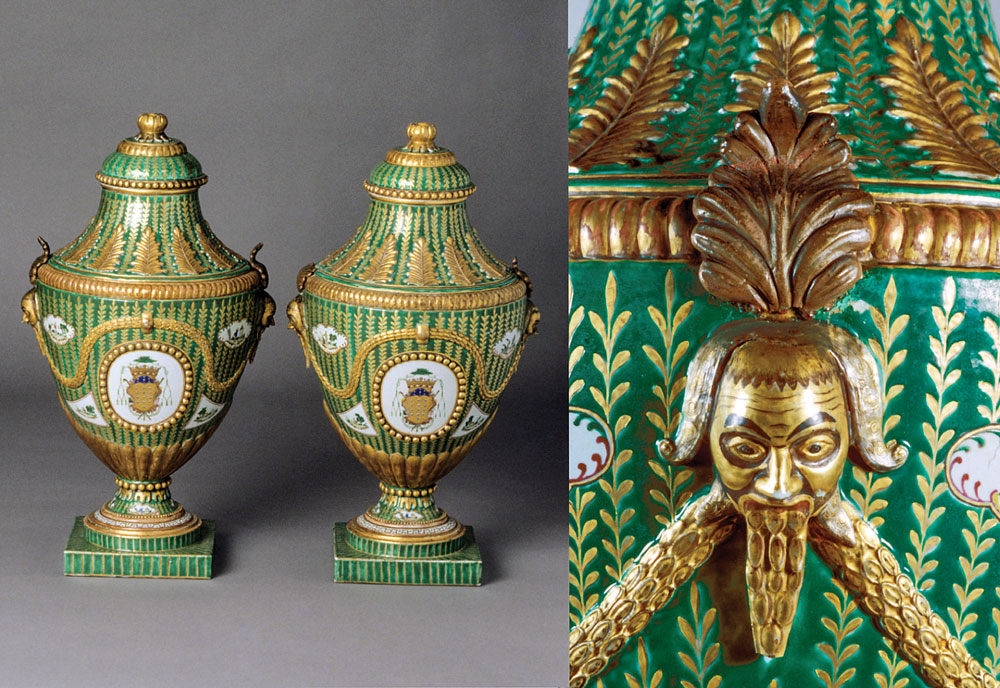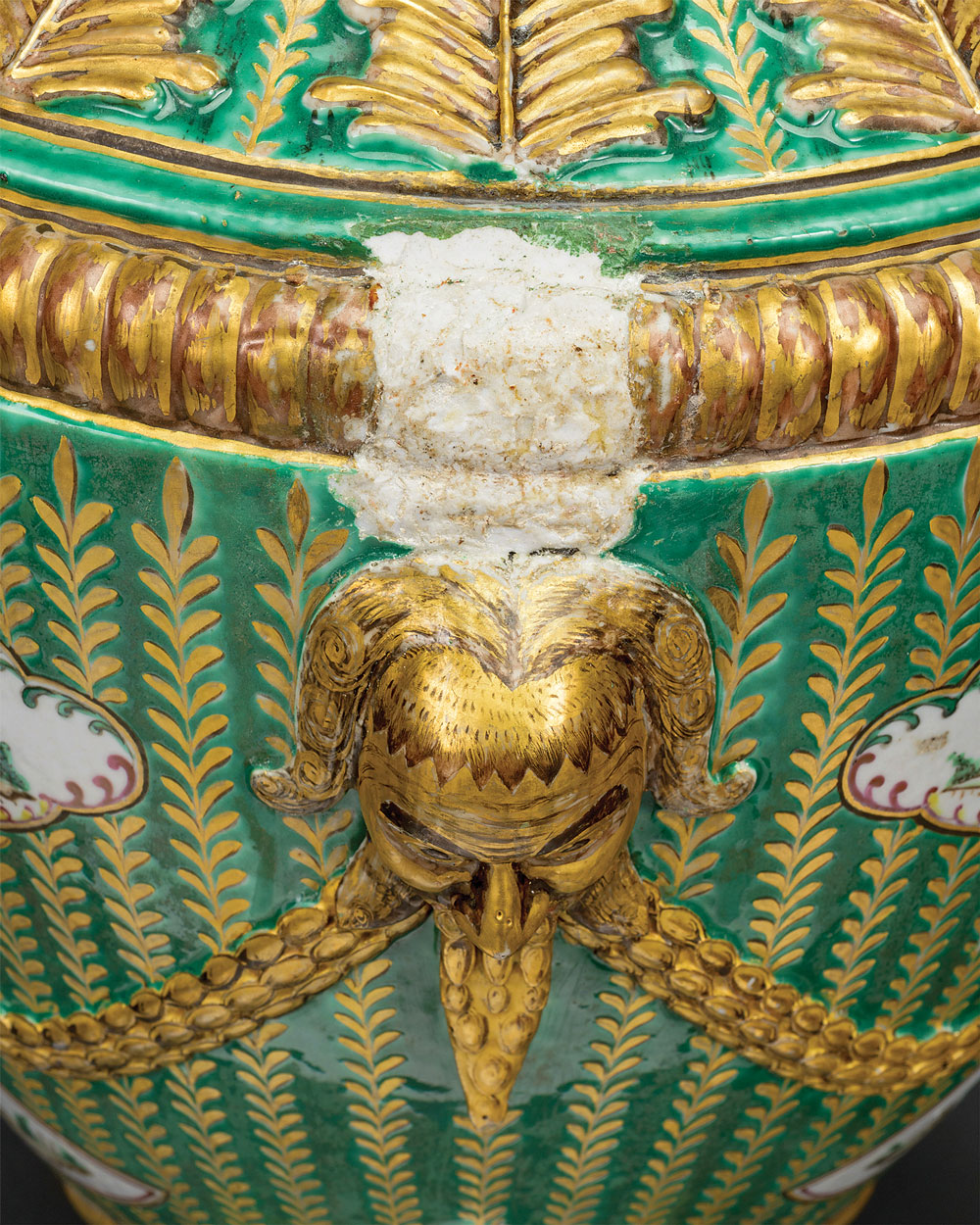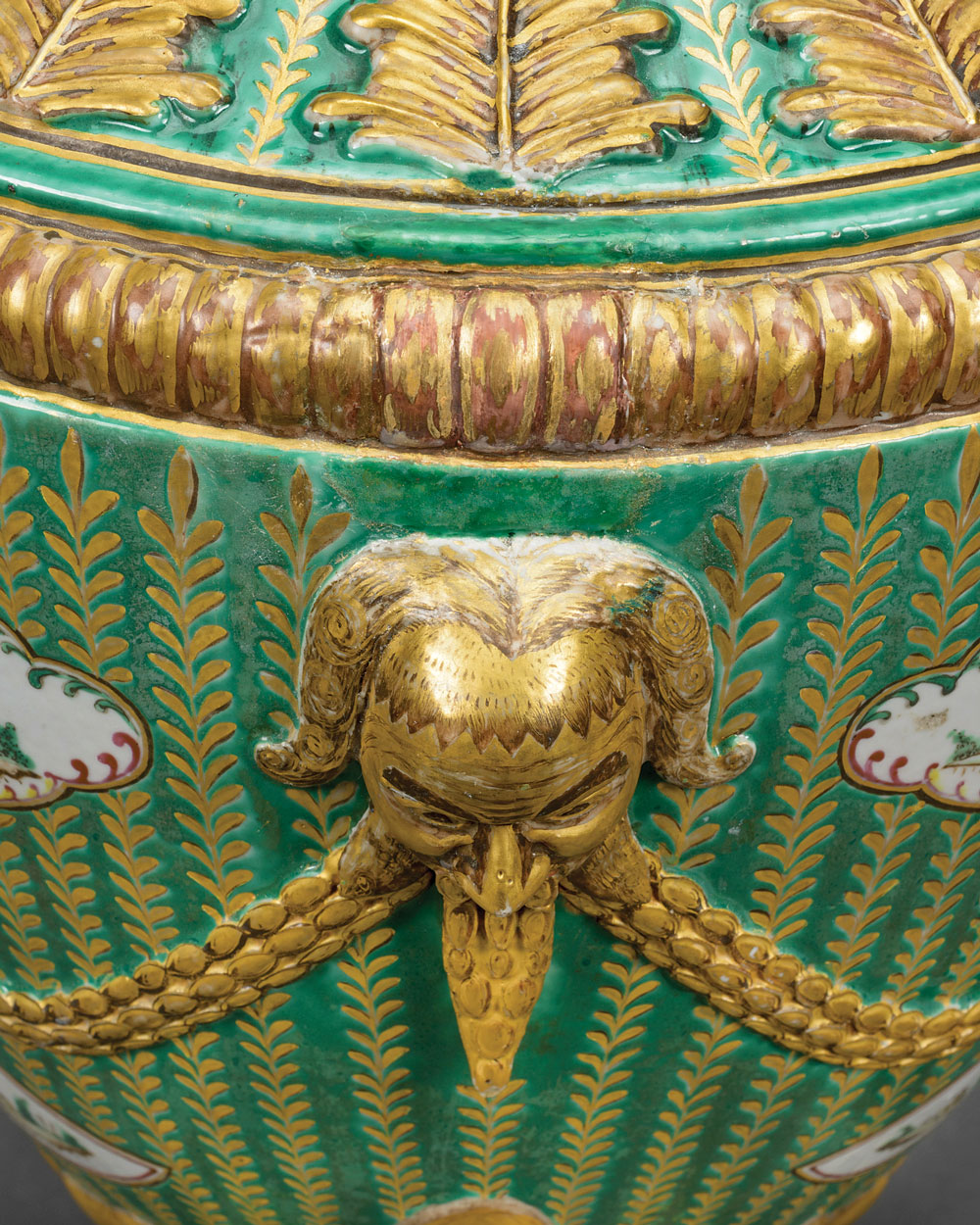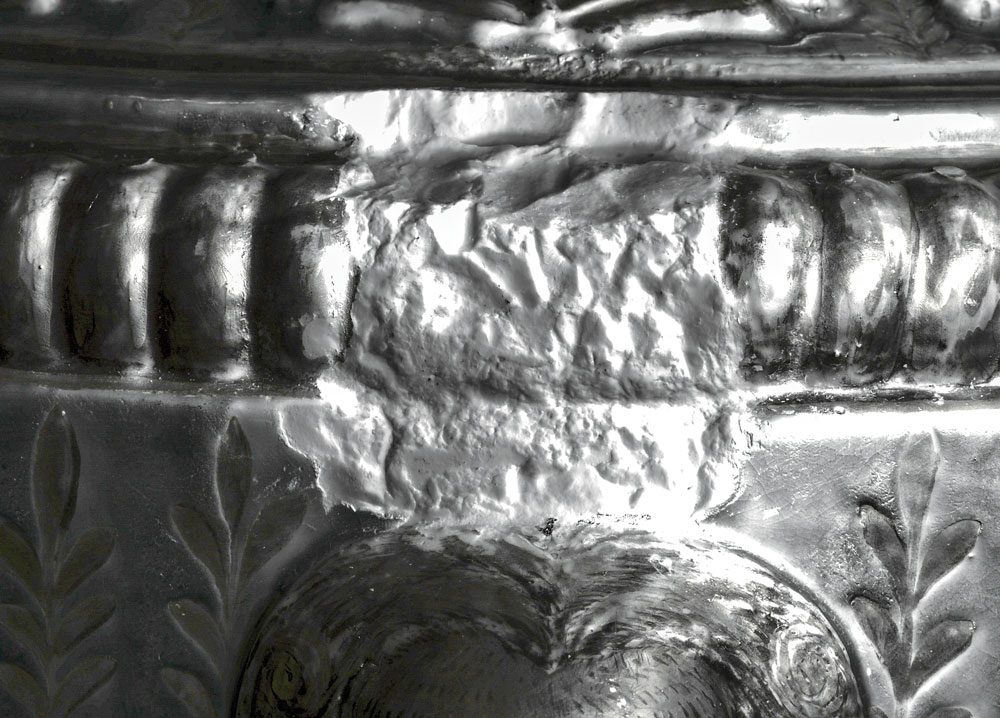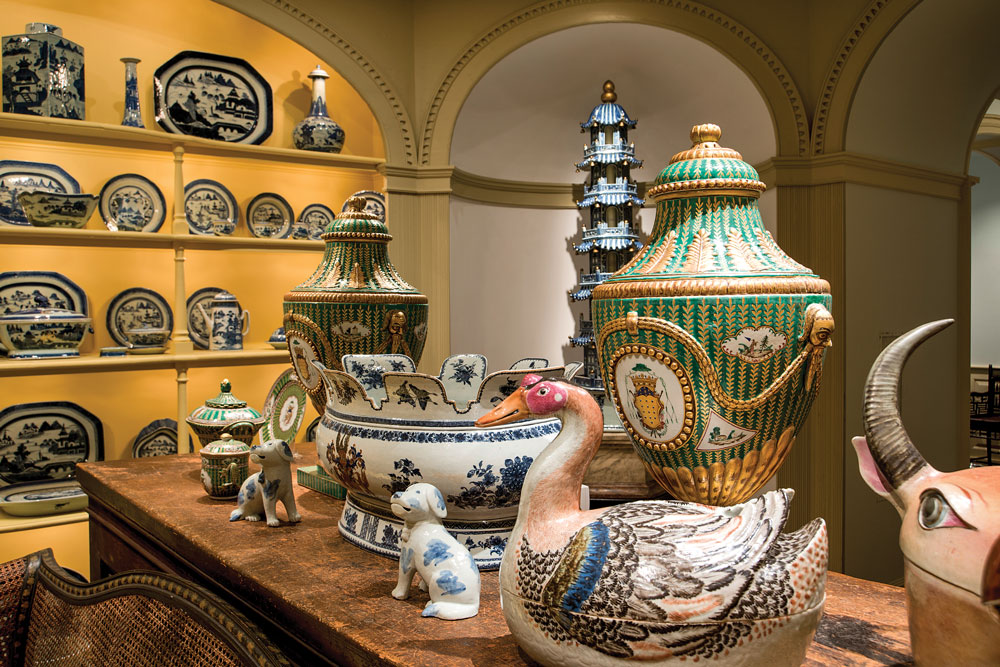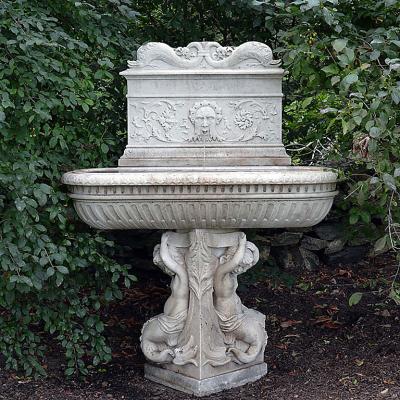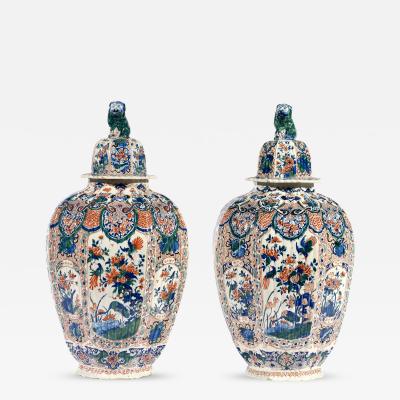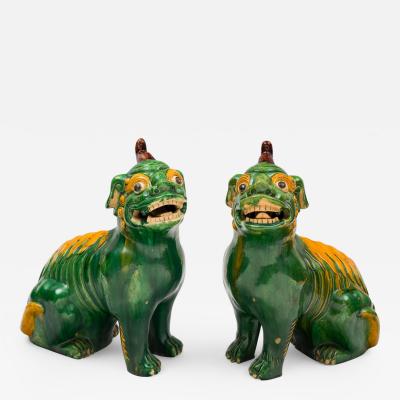Winterthur Primer: Revealing Restorations Through Analysis and Collaboration
When an object is placed on a collector’s shelf or enters a museum vitrine, it can have a complex history involving multiple campaigns of restoration. When H. F. du Pont acquired two spectacular urns in 1914, they proved no exception.1 The urns belonged to an extensive set of porcelain originally commissioned by Dom Frei António de São José de Castro (ca. 1750–1814), the Bishop of Oporto, Portugal.2 Prized possessions of Mr. du Pont, the urns were prominently displayed in his Park Avenue apartment, the house at Winterthur, and eventually moved with him to his cottage on the estate.
Over the course of the one hundred years since du Pont’s purchase, the acanthus leaf restorations—constructed of plaster, shellac, and “bronze” powder paint—became discolored and discordant with the brilliant enameled porcelain (Fig. 1).3 This prompted Winterthur Museum conservators and curators to research their restoration history and devise a plan to harmonize the urns’ appearance.
Magnification and good lighting helped distinguish the restorations from original porcelain. Ultraviolet light illuminated aged coatings, deceptive overpaint, and old adhesives. Using instrumental techniques in Winterthur’s scientific research and analytical laboratory, organic coatings on the restoration were identified as shellac and natural resins.4 X-radiography revealed signs of manufacture evident beneath the obscuring restorations. This technical examination informed the decision to remove the deteriorated, non-original acanthus leaf restorations and carry out treatment that would accurately interpret the object’s condition and original aesthetic.
However, once the restorations were removed, conservators discovered bright, exposed portions of the porcelain body with an intentionally marred surface (Fig. 2). What was the original appearance of this region? Why was the surface altered? Before treatment could continue, collaboration was needed, this time with art historians familiar with these important urns. From curators at Winterthur, along with researchers abroad, we learned that the exuberant decoration of this particular service, characteristic of the Portuguese market, and the size of these particular pieces, makes them without comparison to other examples of Chinese export porcelain sets.5 Ultimately, no similar example or model could be found. The choice was made to blend the losses into the surrounding surface in lieu of inventing ornament.
Given the unusual nature of the urns and the unanswered questions surrounding the modifications, the exposed losses were well documented prior to any further intervention. Reflectance transformation imaging (RTI), a computational photographic technique, was used to create an accurate rendering for future research. This image file (Fig. 3) shows the topography of the surface in great detail, illuminating tool marks and subtle variations in texture.
It is common practice to bond repair materials directly to porcelain, but in this case, a detachable repair was sculpted to compensate the losses so that when additional questions arise, new source material is discovered, or a new archive emerges, these fills can be easily removed to allow study of the underlying surface or replacement with a better-suited form. The treatment is accompanied by written and photographic documentation to inform future conservators about the intervention and the material history decoded in the examination.
By establishing a mindful approach to conservation, a thoughtful and well-researched treatment becomes the foundation for any sound conservation project. While the original appearance of the Oporto urns remains a mystery, it is a question that can continue to be explored by researchers and museum visitors alike now that the urns have been returned to view in the China Room at Winterthur (Fig. 4).
-----
Jessica Chasen is a graduate fellow in the Winterthur/University of Delaware Program in Art Conservation.
More Winterthur Primer articles are available by searching Incollect or can be found in one location at Winterthur.org.
This article was originally published in the 17th Anniversary issue of Antiques & Fine Art magazine, a fully digitized edition of which is available at www.afamag.com. AFA is affiliated with Incollect.
2. João Rodrigues Calvão, Caminhos da Porcelana: Dinastias Ming e Qing (Lisboa: Funação Oriente, 1999), 196.
3. For an analytical report on the composition of the restorations, see Susan Dionisio, “Two Chinese Export Porcelain Urns: An Investigation of Methods and Materials of Manufacture and Analysis of Their Restoration Materials” (unpublished technical report, Winterthur Museum, 2003).
4. Materials were identified with Fourier-transform infrared spectroscopy (FTIR). See report cited above.
5. Daniel Nadler, China to Order: Focusing on the XIXth Century and Surveying Polychrome Export Porcelain Produced During the Qing Dynasty, 1644–1908 (Paris: Vilo International, 2001), 136.















